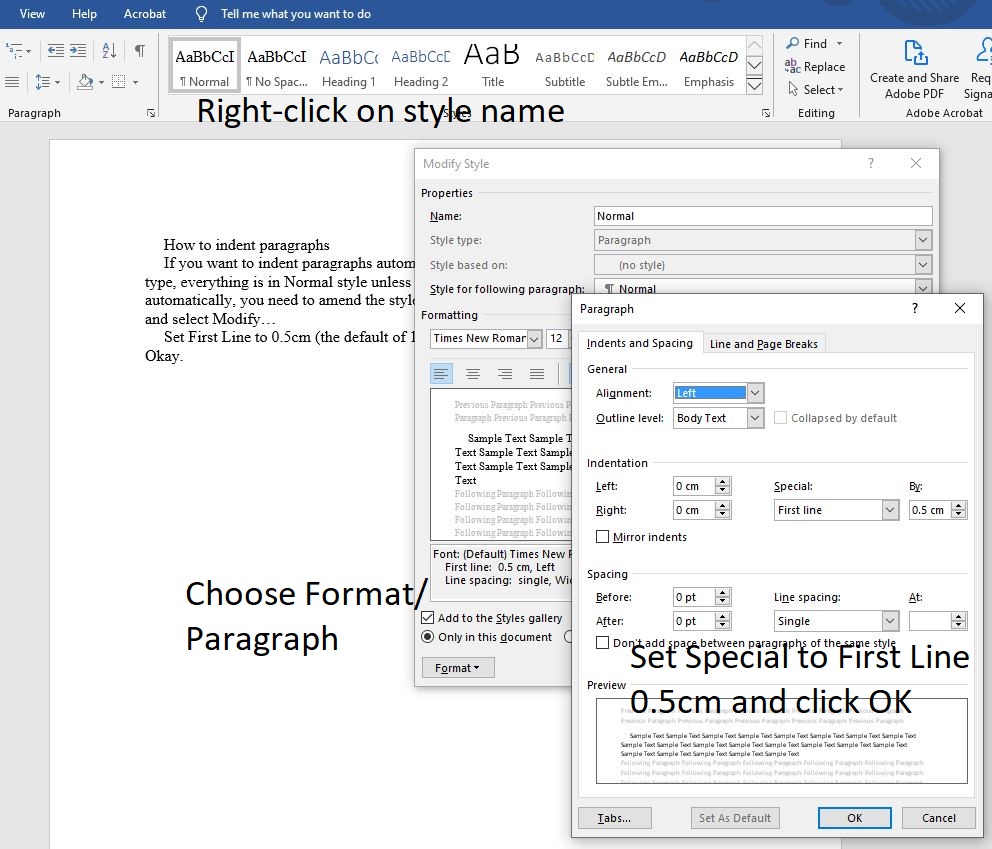
To apply an automatic indent to your style, right-click on the style name and select Modify…
Choose Format/Paragraph from the bottom left corner of the dialog box.
In the next dialog box set Indentation Special to First Line and size to 0.5cm (the default of 1.27cm/half an inch is too big and will leave unsightly gaps).
Click on OK.
All styles based on Normal will update to include this, so you might need to modify headings etc to remove the first line indent so they line up properly.
